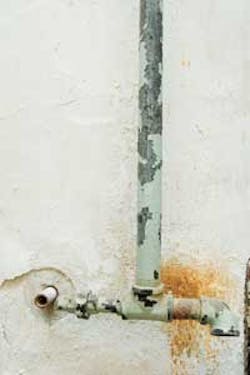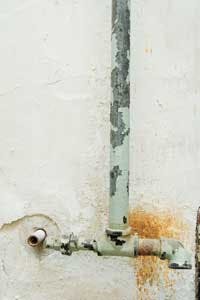Water Industry Plans for Transition to Lead-Free Rules
By James Laughlin, WaterWorld Editor
Beginning on January 4, 2014, a new national law will amend the Safe Drinking Water Act to require all products in contact with drinking water to have a 0.25% maximum lead content for all wetted components using a surface based averaging formula. This rule will impact virtually every component of a water treatment and distribution system from the treatment plant to plumbing fixtures inside homes.
On January 4, 2011, President Obama signed into law the "Reduction of Lead in Drinking Water Act," which revised the definition for "lead free" in the Safe Drinking Water Act (SDWA) as it pertains to "pipe, pipe fittings, plumbing fittings, and fixtures." The national law, for the most part, replicates California's regulation governing lead in drinking water, with many of the same test requirements and product exemptions.
In the US, all current waterworks brass becomes obsolete and cannot be installed or sold after January 4, 2014. The new lead-free law will apply to a wide variety of products used in water distributions systems, including meters, pumps, valves, pipes, fittings, or fixtures that come into contact with potable water. This includes corporation stops, curb stops, service fittings and couplings, meter valves, meter couplings, check valves, backflow valves, and more.
Planning Ahead for No Lead
Managing the logistics of transitioning your inventory is all about the details, which is why it is important to develop a plan:
- Identify and prioritize components that will need to be changed over to no-lead.
- Identify components that are already compliant or will not need to be changed over to no-lead.
- Manage your warehouse: keep no-lead products and leaded products clearly labeled and separated.
- Begin ordering no-lead products well before the lead-free laws go into effect for your state, so you are not stuck with obsolete inventory.
- Install, recycle or discard non-compliant components before the January 4, 2014, national deadline.
Background
In 2006, California became the first state to require essentially lead-free plumbing fittings and fixtures, with passage of California Assembly Bill 1953 (AB 1953). Since then, other states, including Vermont, Maryland and Louisiana, have passed comparable laws limiting the lead content in materials in contact with drinking water.
The key change mandated by AB 1953 was the reduction of lead in wetted surfaces to a weighted average of not more than 0.25%. California also required that all plumbing products that come in contact with potable water be certified by an independent third-party accredited by the American National Standards Institute (ANSI).
While ANSI/NSF 61 has been the standard for drinking water components for many years, it does not include language that directly addresses the surface-based averaging formula required in the new federal rule and California law. In partial response to this issue, the NSF Joint Committee on Drinking Water Additives developed Annex G for ANSI/NSF 61. While Annex G provided a method for calculating lead content, it did not expand the scope of ANSI/NSF 61 to include the full range of products identified in the California law. It also did not include specific testing requirements and methods for analyzing the lead content of materials. As a result, NSF Joint Committee developed a new standard, ANSI/NSF 372 – Drinking Water System Components, Lead Content.
Released in late 2010, ANSI/NSF 372 applies "to any drinking water system component that conveys or dispenses water for human consumption through drinking or cooking," mirroring the scope of AB 1953. NSF Standard 372 removes the Standard 61 preapproval caveat and requires a 0.25% maximum lead content for the wetted component base material as the only measure. The approval is determined by a wetted surface area average calculation or just simply using all no-lead materials for areas in contact with drinking water.
This new approval enables large or complex products and assemblies to achieve certification for California and the 2014 national lead-free law that previously were unable to be certified under Standard 61.
NSF Standard 372 is a lead-only approval standard and does not address the other metals and chemicals evaluated under NSF Standard 61 or Standard 61 Annex G.
Although the standard is still fairly new, it will be a useful tool to identify products that have been certified to meet the lead-free rule, said Steve Tefft, Vice President of Product Engineering at A.Y. McDonald Mfg. Co.
"It would be a logical thing for utilities to begin including NSF 372 as they are writing their new specifications," he said.
Wording Changes
While the new federal law mimics the California legislation, a key wording change could greatly expand the scope of the federal rule. The California measure exempted products "not intended" for use in potable water applications, while federal lawmakers changed the phrase to products "not anticipated" for use in potable water applications.
Industry suppliers worry that any number of products that would have been excluded from the rule will now have to comply with the lead standards because of that wording change.
"Changing the language in the Safe Drinking Water Act will have huge ramification across the industry," said Andre Noel, Senior Product Marketing Manager at Neptune Technology Group.
"If I supply a garden hose, it's clearly not intended for use in potable water, but could I anticipate that someone could drink out of it? Sure. So now that falls under the requirements," Noel said. "What about fire hydrants? That's a new one. Fire hydrants were typically excluded, but they are not excluded this time around."
Given the language of the law, manufacturers will need to document their reasoning for product and/or component exemptions from the lead-free rule. It is probable that lawsuits will be filed over some product exemptions in some suit-prone states.
Products specifically excluded from the lead rule include those used exclusively for non-potable services such as manufacturing, industrial processing and irrigation. Service saddles and water distribution main gate valves that are two inches in diameter or larger are also excluded from the federal rule, along with most wastewater plumbing fixtures. However, service saddles are NOT excluded from the lead-free requirements in Maryland and Louisiana.
Transition Planning
Utilities, manufacturers and distributors should all be planning for the January 2014 deadline.
"Utilities are not the only ones impacted by the new rule. It also impacts anyone in the supply chain, including manufacturers, suppliers, and distributors," Noel said. "In all years I've been in the industry, this is probably the biggest change I've ever seen."
Leaded components already installed in distribution systems by January 4, 2014, will be grandfathered in. Utilities can make repairs in place, but once a component is removed from the system for any reason, it has to be replaced with a lead-free component.
Utilities and distributors would be wise to identify and prioritize components that will need to be changed over to lead-free, Tefft said.
"They need to be separating out their inventory and getting specifications in place for the change," he said. "We are marking each no lead component with an NL to designate it so our customers know it is lead-free and can separate their inventory. We are also doing that on packaging as well."
Most utilities keep a reasonable amount of components and products on hand to maintain their systems. Utilities should be looking at projects that they have coming up and plan how to use the materials they have on hand before the deadline, said Mark Anderson, Product Engineering Manager at the Ford Meter Box Co.
"They might also look at a scrap plan or some other use plan to minimize how they are impacted at the start of 2014," Anderson said. "I am not aware of any manufacturer that will take back a leaded product, so it will be up to the end user and/or the marketplace to determine where that material goes."
Ford Meter Box has already begun reducing the amount of leaded products it produces for use in contact with drinking water in the United States, and that process will accelerate through 2013.
"For the first half of the year we will be building up our no-lead inventory and reduce down the leaded," Anderson said. "When it gets to about mid-year we will really be working to transition people over and reducing down heavily the leaded material we produce."
Lead-free products are typically more expensive than leaded varieties, which might tempt some contractors and utilities to push the envelope as they work on projects through 2013.
"Utilities and contractors with projects need to start looking at their timeline in reverse to make sure they can get rid of the material that they have ordered. That is especially true for utilities going out for bid in early 2013," Anderson said. "They need to make sure they have pricing on both leaded and no-lead products to make sure they are covered when 2014 hits.
"Some people will probably be caught with their pants down in projects where they have quoted a leaded product and then have to convert it over to no-lead at a significant price increase," he said.
Information Resources:
Neptune Technology Group: www.shedthelead.com
Ford Meter Box: www.fordmeterbox.com/nolead/info.php
A.Y McDonald: http://noleadbrass.com/educate.html
Master Meter White Paper: The Skinny on Lead: www.waterworld.com/whitepapers/2012/07/mastermeter.html

